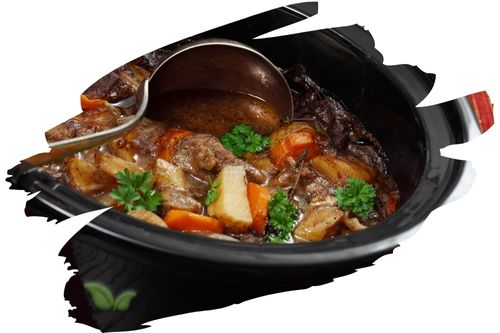
Introduction
Pickling and preserving have been culinary practices for centuries, allowing people to savor the flavors of seasonal fruits and vegetables throughout the year. The process of pickling not only enhances the taste of produce but also helps preserve it for an extended period. While there are various methods and ingredients used in pickling, one often overlooked but highly effective addition is cream of tartar. In this article, we will delve into the art of pickling and preserving with cream of tartar and how it can elevate your pickling endeavors.
Understanding Pickling and Its Importance
Pickling is a preservation process that involves immersing fruits or vegetables in a mixture of brine, vinegar, or other preserving agents. This process not only adds flavor to the produce but also creates an acidic environment that inhibits the growth of spoilage-causing microorganisms. Pickling helps extend the shelf life of perishable fruits and vegetables, allowing you to enjoy their goodness long after their harvest season.
The Role of Cream of Tartar in Pickling
Cream of tartar, with its acidic properties, plays a significant role in pickling. It serves as an essential component of the pickling brine, adding acidity that enhances flavor and preserves the texture of the pickles. The acidic environment created by cream of tartar ensures that the pickles retain their crispness and firmness throughout the preservation process.
Advantages of Using Cream of Tartar in Pickling
1. Crispness Retention
One of the most significant advantages of using cream of tartar in pickling is its ability to maintain the crispness of the fruits or vegetables being pickled. This is especially crucial for pickles like cucumber and green beans, where texture is an essential aspect of their appeal.
2. Flavor Enhancement
Cream of tartar's tangy taste enhances the overall flavor profile of the pickles. It complements the natural taste of the produce while adding a subtle zing that tantalizes the taste buds.
3. Natural Preservation
The acidic environment created by cream of tartar acts as a natural preservative, inhibiting the growth of harmful bacteria and extending the shelf life of the pickles.
4. Improved Aesthetics
Using cream of tartar in pickling can result in pickles that are visually appealing, with vibrant colors and an appetizing appearance.
5. Health Benefits
Cream of tartar contains potassium, which can offer health benefits when consumed in moderation. Pickles made with cream of tartar can provide a source of this essential mineral.
How to Use Cream of Tartar in Pickling
Adding cream of tartar to your pickling recipe is simple and straightforward. Here's a basic pickling brine recipe that incorporates cream of tartar:
Cream of Tartar Pickling Brine Recipe
Ingredients:
- 1 cup distilled white vinegar
- 1 cup water
- 2 tablespoons pickling salt
- 1 tablespoon sugar (optional)
- 1/2 teaspoon cream of tartar
- Your choice of fruits or vegetables for pickling
Instructions:
- In a saucepan, combine the distilled white vinegar, water, pickling salt, and sugar (if using). Bring the mixture to a boil, stirring until the salt and sugar are fully dissolved.
- Stir in the cream of tartar, ensuring it is evenly distributed in the brine.
- Prepare your fruits or vegetables for pickling by washing and trimming them as needed.
- Pack the fruits or vegetables tightly into sterilized glass jars or containers.
- Pour the hot brine over the fruits or vegetables, making sure they are completely submerged.
- Seal the jars or containers tightly and allow them to cool to room temperature.
- Once cooled, store the pickles in the refrigerator for at least 24 hours before enjoying them.
FAQs (Frequently Asked Questions)
Q: Can I use cream of tartar in all types of pickles?
A: Cream of tartar is best suited for pickles that require crispness retention, such as cucumber pickles, green bean pickles, and certain fruit pickles. It may not be as necessary for pickles like sauerkraut or kimchi.
Q: Can I adjust the amount of cream of tartar in the pickling brine?
A: Yes, you can adjust the amount of cream of tartar to suit your preference. However, be mindful not to use too much, as it can result in an overly tart flavor.
Q: Is cream of tartar safe for pickling at high temperatures?
A: Cream of tartar is generally safe for pickling at typical pickling temperatures. However, it's best to follow a trusted pickling recipe to ensure proper proportions.
Q: How long can pickles made with cream of tartar last?
A: When stored in the refrigerator, pickles made with cream of tartar can last for several months, maintaining their quality and flavor.
Q: Can I use cream of tartar in fermented pickles?
A: Cream of tartar is not commonly used in fermented pickles, as the fermentation process already creates an acidic environment.
Q: Can I reuse the pickling brine for another batch of pickles?
A: While it's possible to reuse pickling brine, it's essential to ensure that it remains uncontaminated and safe to use. Always sterilize the containers and ensure that the brine is refrigerated between uses.
Conclusion
The art of pickling and preserving with cream of tartar is a timeless culinary practice that offers a delightful and flavorful way to enjoy the bounty of seasonal produce year-round. Cream of tartar's ability to retain crispness, enhance flavor, and naturally preserve the pickles makes it a valuable addition to any pickling recipe. So, unleash your creativity in the kitchen, experiment with various fruits and vegetables, and elevate your pickling game with the magic of cream of tartar!
Alert: While spices can have many beneficial properties for health, using them for medical purposes should be done under the guidance and supervision of a healthcare professional or specialist. Some spices may interact with medications or cause adverse reactions in certain individuals, and it is important to use them safely and appropriately. If you are considering using spices for a medical condition, it is important to consult with a healthcare professional before doing so.




















































